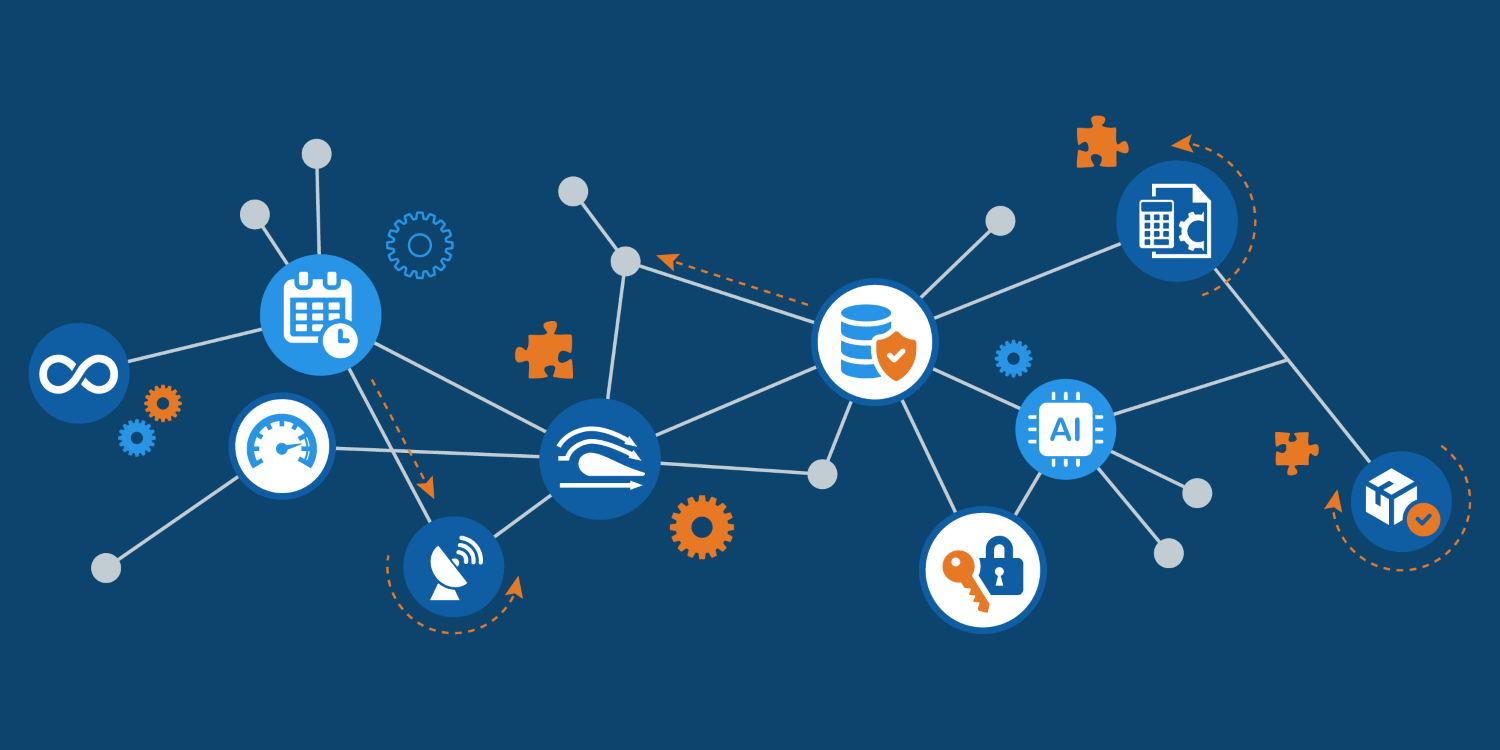Connecting Your Business: Automating Order Processing from Purchase to Fulfillment

From purchase to fulfillment, customers expect fast deliveries and clear communication. And to meet these demands, speed, accuracy, and collaboration define success.
Many businesses still rely on disconnected order processes that use manual data entry, paper-based approvals, and siloed systems, slowing the fulfillment and increasing error rates.
Every purchase order, sales order, and bill of lading is crucial to delivering timely responses and service, but when those documents live in different systems, teams lose visibility, customers lose confidence, and revenue leaks through inefficiencies.
The solution lies in automation. By connecting your order process from end to end, you create one seamless flow of information from the first request to the final delivery.
The Hidden Cost of Disconnected Order Processing
Even the most well-run organizations experience the ripple effect of manual order management. An employee retypes purchase details into an ERP system, and another team member confirms shipping dates by searching through email threads. And finally, finance waits for paper documents before issuing an invoice.
Each step adds friction, risk, and lost time to the process as small inefficiencies compound quickly and order volume grows. Without visibility across departments, businesses struggle to answer simple questions like:
- Has this order been approved?
- Did the right items ship?
- Has the customer been billed?
Automation solves these challenges by keeping documents and data accessible to the right teams so that your operation keeps moving.
The Order Lifecycle: From Request to Delivery
The order process isn’t a single transaction; it’s a chain of events that must be handled smoothly to keep business on track.
- Purchase Orders (POs): The process begins when a buyer requests products or services, defining quantities, pricing, and delivery terms.
- Sales Orders (SOs): The seller confirms those details and creates an internal order for fulfillment.
- Bills of Lading (BOLs): When goods are shipped, this document verifies contents, carrier details, and destinations, serving as proof of delivery.
When managed manually, these documents are often siloed across departments such as finance, logistics, and sales, leading to costly disconnects. But when access is made easy through automation, they become part of a single digital workflow, ensuring everyone operates from the same, accurate data.
The Manual Challenge: Where Errors Multiply
Purchase Orders
Manual entry of emailed or faxed POs is time-consuming and prone to human error. A single misplaced digit in quantity or price can cause inventory issues or vendor disputes. Retrieving these documents for audits or confirmations means digging through inboxes or file cabinets.
Sales Orders
Translating POs into sales orders by hand often duplicates effort and introduces mistakes. Line items may be missed or mismatched, resulting in billing delays and customer dissatisfaction. When updates are requested, tracking down the original documents can take hours.
Bills of Lading
BOLs are often printed, signed, and filed away, making it difficult to verify shipments or resolve disputes. When shipment data isn’t linked to the ERP, teams lack a clear view of order status. In short, manual order processing introduces errors, slows cycle times, and limits visibility at the exact moment when businesses need agility.
Automation as a Digital Thread
Automation creates a digital thread that connects every document and department involved in order processing. Each step, from PO capture to final delivery, is streamlined with searchable information and synced with your ERP.
Purchase Order Automation
AI-driven capture technology automatically extracts data from incoming POs, including vendor, quantity, price, and terms. Orders are classified, indexed, and searchable by vendor, department, or date.
ERP integration ensures data flows cleanly into the system, enabling instant requisition approvals and accurate three-way matching.
No more rekeying or lost paperwork.
Sales Order Automation
Captured PO data transfers seamlessly into the ERP to generate matching sales orders.
Acknowledgments are automatically sent, improving customer communication and reducing delays. SOs are linked to their originating POs, giving teams a complete view of every transaction in a single digital workspace.
Bill of Lading Automation
When goods ship, AI captures shipment details like carrier, contents, and delivery location, and links them directly to related POs and SOs. The ERP updates order statuses in real time, triggering follow-up actions like invoicing or inventory adjustments. Customer service can even instantly retrieve any shipment record by order number, carrier, or delivery date.
Automation weaves these processes into a single, traceable flow that eliminates manual handoffs and ensures accountability from end to end.
Connecting People, Not Just Systems
The greatest power of automation isn’t speed; it’s connection. When documents flow seamlessly between systems, teams finally operate in sync.
- Procurement can confirm PO terms before approving invoices.
- Sales sees exactly what’s been ordered, fulfilled, and billed.
- Finance gains accurate data for reconciliation and forecasting.
- Operations works confidently from real-time order updates.
Unified Outcomes: Efficiency, Accuracy, and Strategic Growth
Businesses that connect their order processes with automation experience measurable transformation:
- Faster Order Cycles: Information moves quickly from purchase to fulfillment, reducing turnaround times.
- Error Reduction: Automated document capture ensures consistent data across every stage.
- Lower Operational Costs: Fewer manual tasks reduce labor costs and increase throughput.
- Full Process Visibility: Linked documents provide real-time insight for management and reporting.
- Customer Confidence: Orders are processed accurately and communicated clearly at every touchpoint.
Automation optimizes workflows and builds a foundation for growth. When purchase orders, sales orders, and shipping documents move in harmony, your entire business moves faster and more efficiently.
How Square 9 Can Help
Square 9 Softworks is a generative AI-powered platform that removes the frustration of extracting data from documents, forms, and all external sources, so you can harness the full power of your information. Release your team from repetitive tasks while your work flows freely in areas like accounts payable, order processing, onboarding, contract management, and more. The Square 9 platform captures your unstructured content, transforms it into clean, searchable data, and securely shares it across your organization to accelerate your decisions and actions.

